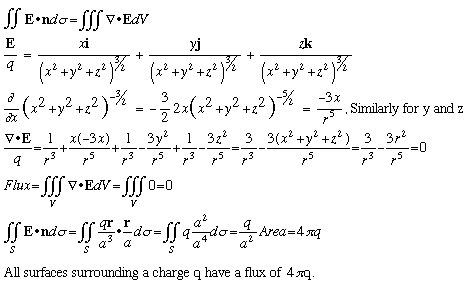
In Lecture 8 we used the divergence theorem to more easily compute surface integrals. In this lecture we do a 'proof' of the divergence theorem and do an example of it's use - Gauss' Theorem.
Given a closed surface S, with an outward pointing unit normal, n, the Divergence Theorem says:

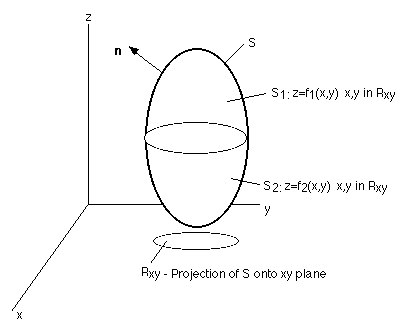
Using the geometric definition of the dot product, and because n is a unit normal, we can dot it with the basis vectors to get the angles between n and the axes. That is:
n (dot) i = cos A - The angle from n to the x-axis
n (dot) j = cos B - The angle from n to the y-axis
n (dot) k = cos C - The angle from n to the z-axis
n = cos A i + cos B j + cos C k since the dot product of n with each basis vector is that component of n.
Now we restate the Divergence Theorem using the components of the vector field F. Next we begin the proof.
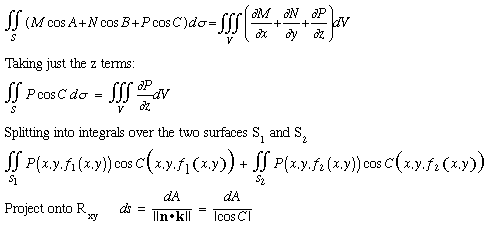
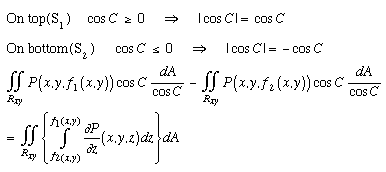
The last step involves taking the integral of the derivitive of P. This is like multiplying by one. It doesn't change anything, you can do it anytime.
Looking at the last term, what we really have is a volume integral. Evaluating the inner integral, we have

This is the result we required. Thus we have proved the z terms are equal.
The other terms work out in a similar mannar. If the region we have is not a convex region, we can costruct it by placing convex regions next to each other and summing up the results. Thus, we have proved the Divergence Theorem for a large number of regions.
Our Vector Field is E, the electric field due to a point charge, q, sitting at the origin.
E = q r / r^3
r = xi + yj + zk
r = ||r|| = (x^2 + y^2 + z^2) ^ 1/2
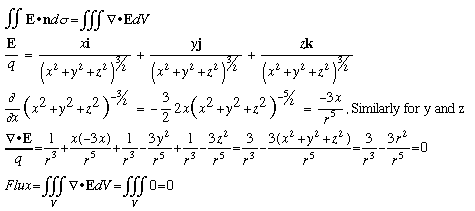
This works for any hollow shape. The flux entering the volume is equal and opposite to the flux leaving it.
Flux accross any surface surrounding q is equal to the flux accross a sphere surrounding q. We must calculate this flux directly, since it encloses a volume with a discontinuity in E.
